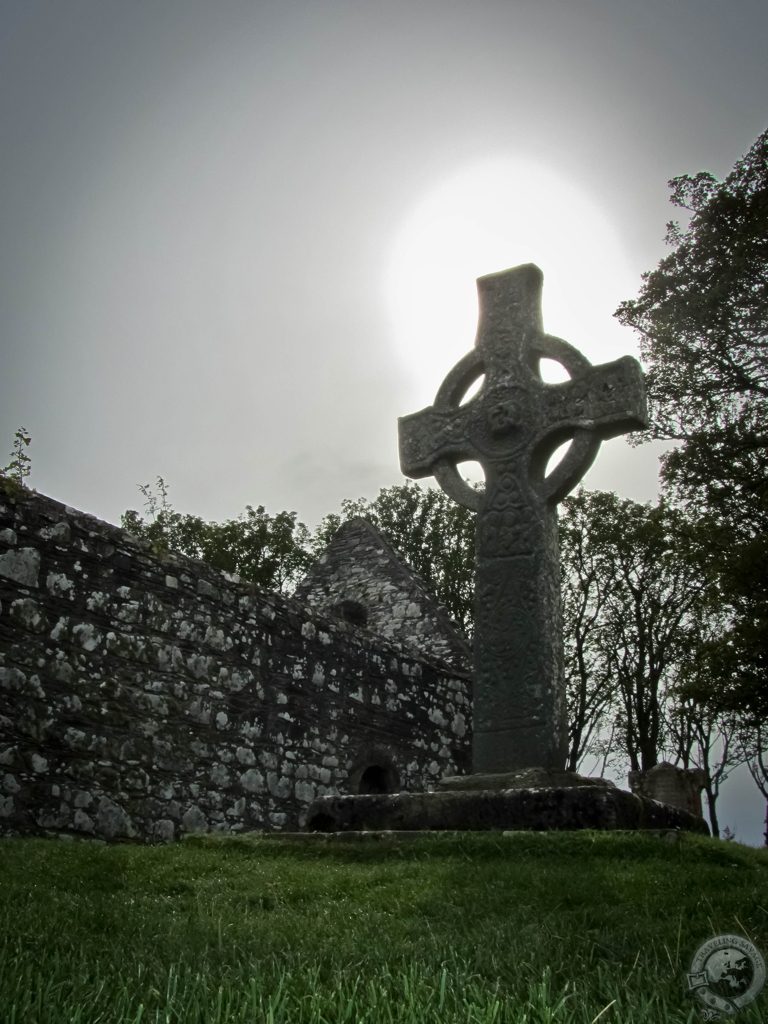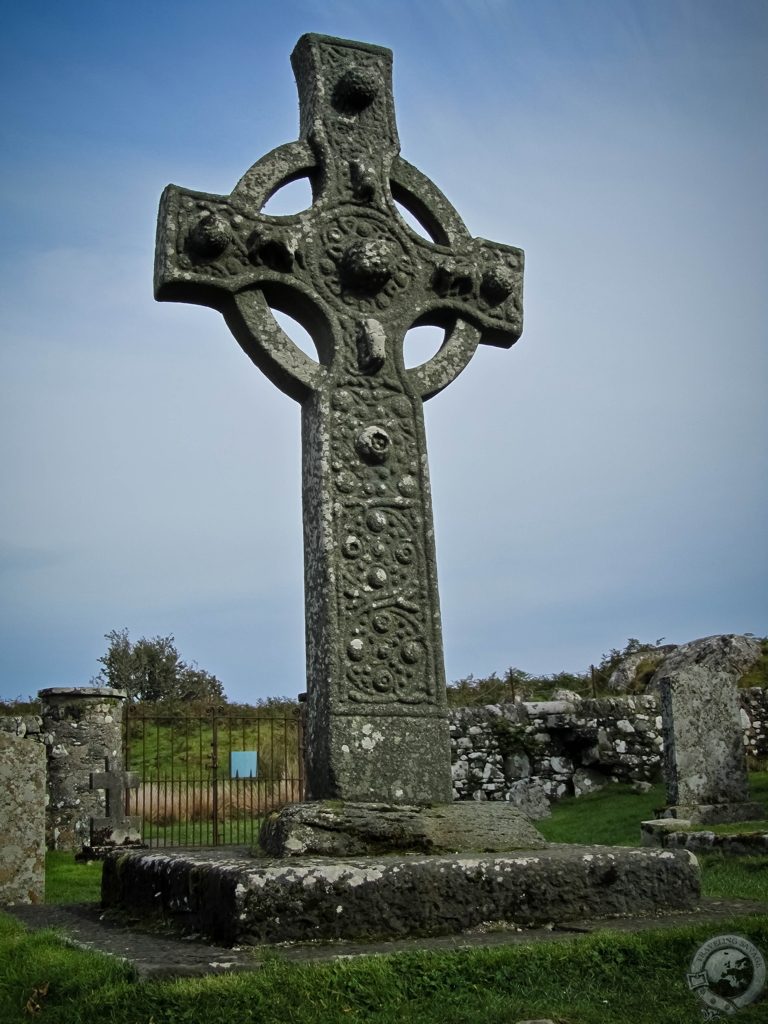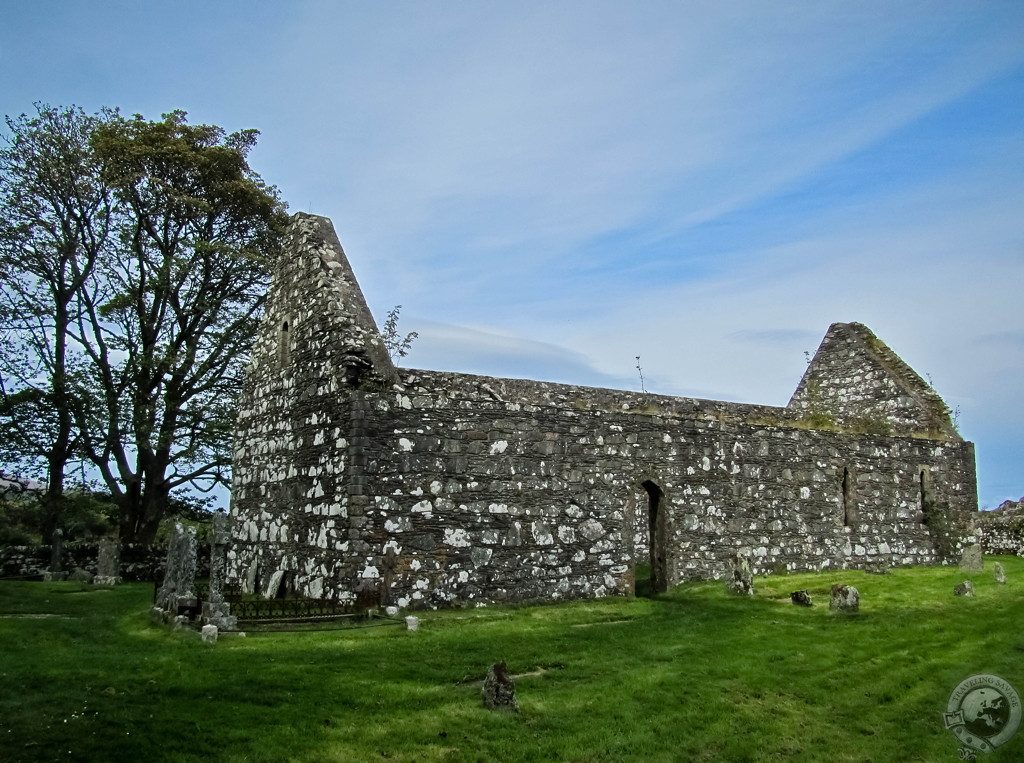Islay, Scotland | September 4, 2011
Islay’s boggy moors peek above the encircling sea like the backside of a drowned sailor. Water wells up into every footprint. How many will it take to send the island back beneath the sea? At Port Askaig, the monstrous MV Finlaggan unloads its berth beneath a low-slung sky white as a centenarian’s crown. Winds, lathed off the sea, whicker in the car frame and buoy scents of rotting, bulbous seaweed. There is a belief that the farther one gets from civilization, the closer one gets to his own humanity. My skin is clammy and the air damp as I speed south toward Port Ellen, sinking with every passing mile.
The old stone farm hides in a depression flanked by fields filled with Clydesdales and black-face sheep. The Bothy is a small house, probably an old farmhand’s cottage, with a burnt-out light, and Toby arrives on his four-wheeler bearing a new bulb. I retreat inside, hearing mention of the inimitable Kildalton Cross. Later, the windows of my stone cottage flash black. Dark is when the sky weeps; somehow the rain is less tragic without a bent form or crumpled face to accompany it. I am a taught bowstring sitting in a plush, gray chair thinking of the bits of wool clinging to barb-wire fences.
Sometime in that wet night sleep gathered me into its arms.
Sun blasts through the skylight and sends me skipping down the road past Port Ellen and its three spiritual sisters: Laphroaig, Lagavulin, and Ardbeg. On into the uncharted southeast I drive down single-track roads overhung with old forest and bordered by a green glow. Giant knobs of rocks languish in the water along the coastline and pink balls bob in the slight surf. The world seems to end beyond Ardbeg, but then, on a hillock, there kneels a stone building.

A tentative blue sky flashes over the lichen-covered walls of a church. Thick turf covers the ground around ancient graves marked by carven stone slabs set within the earth. Jutting from a stepped plinth stands an eight-foot tall Celtic cross seemingly immune to the ravages of time. Intricate biblical allegories cover the epidiorite cross, and a pile of glittering pence falls at the foot. Seagull cries and the mutterings of other visitors punctuate the silence. Everywhere the sea wind lashes and darts, and the Kildalton Cross stands unmoved.
More than 1,200 years have passed since mason laid chisel to the grey-green stone. What storms had it withstood? My own life and all its turbulence, less than a millimeter from the face of Kildalton’s Cross. I sit on the soft grass and lean against the wall of the churchyard. The minerally smell of old rocks and age, the click-buzz of a man’s polaroid, heavy coin splashing against heavy coin, the wan sunlight warming my face: they flood over me. And the aroma of peatsmoke on an uplifting wind, of spirits rising.
In my mind I’m gathering up the bits of wool blown across the island by the once cold and unfamiliar wind.



You write so beautifully!
i love this – echo andi – such powerful, moving writing (and photos).
Keith,
So beautifully immersive into your experiences at the Kildalton Cross. After readying you poetic prose, I feel with all my senses, I too have experienced this wonderful journey of your soul!
Just beautiful, wish I could write like you. Thanks!
Fantastic, Keith. A damp little postcard to massage the shoulders of the inner traveler.
Cheers Nico!